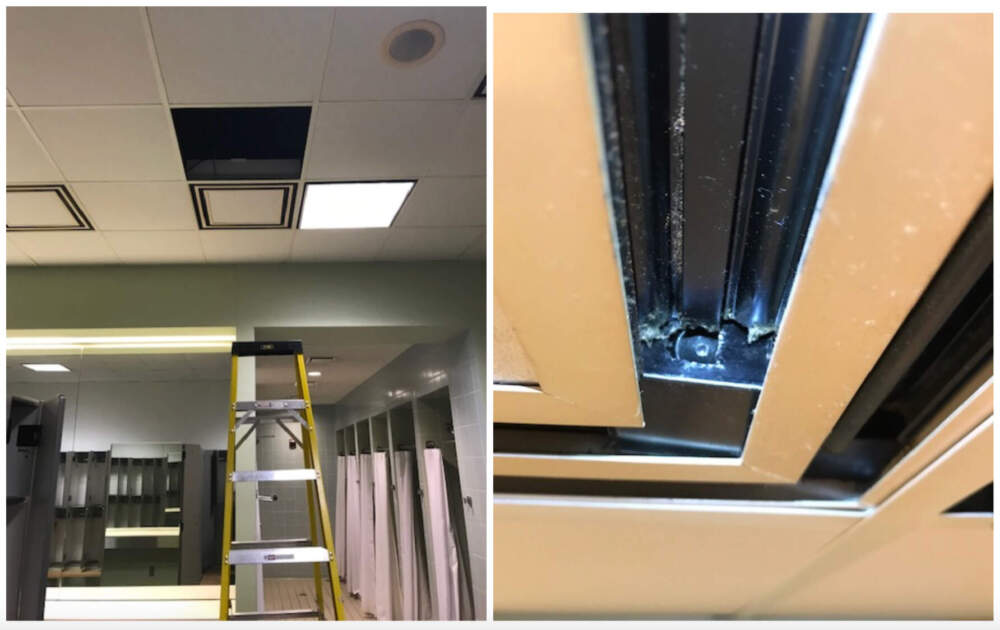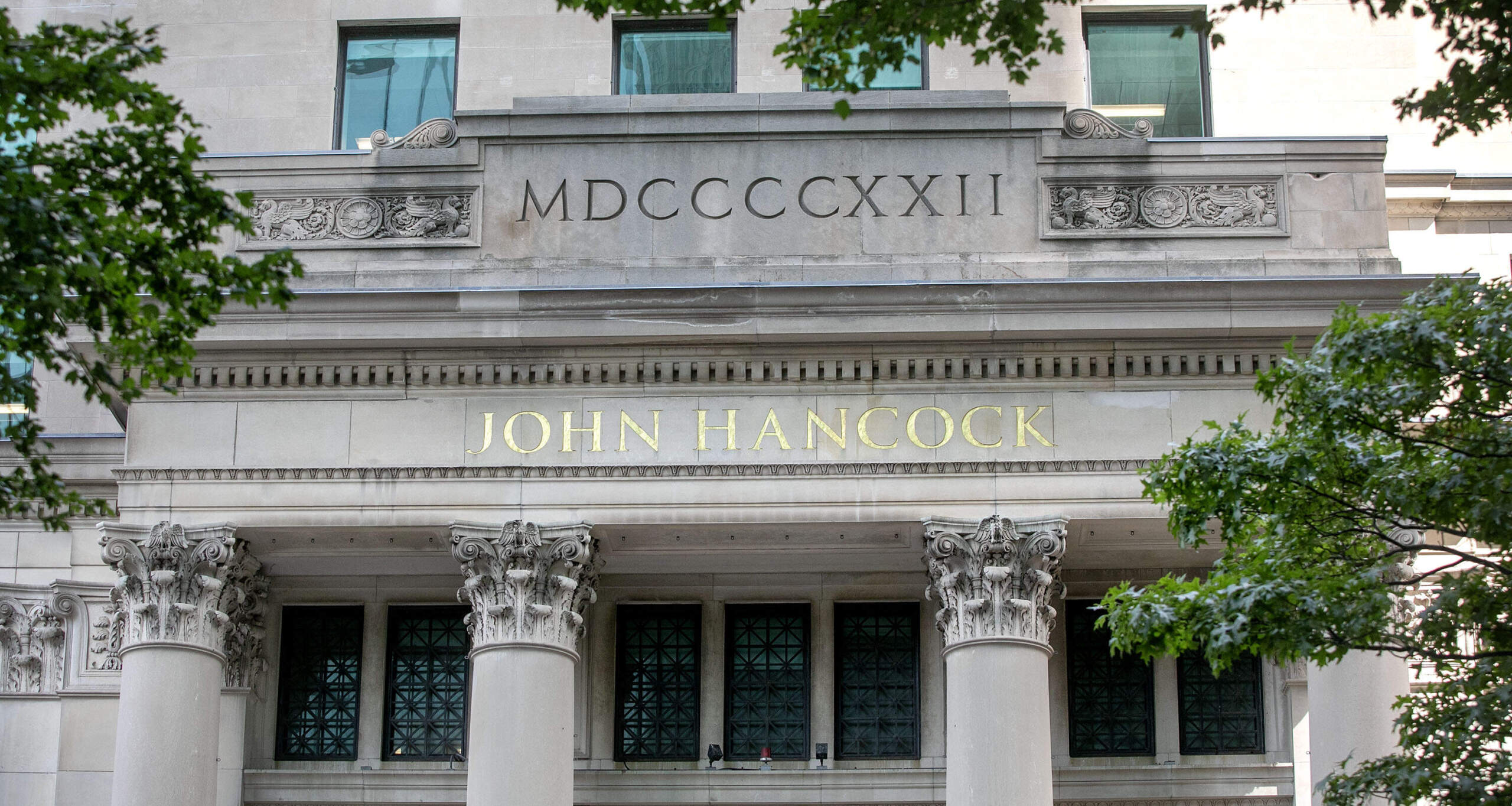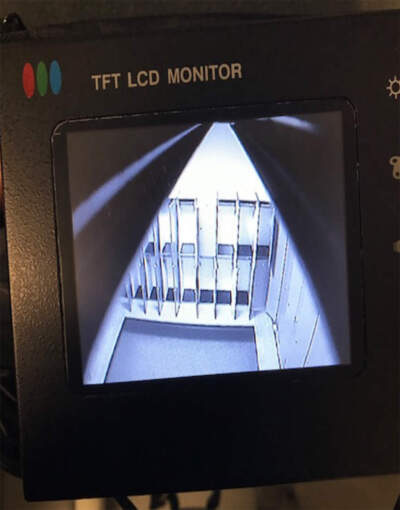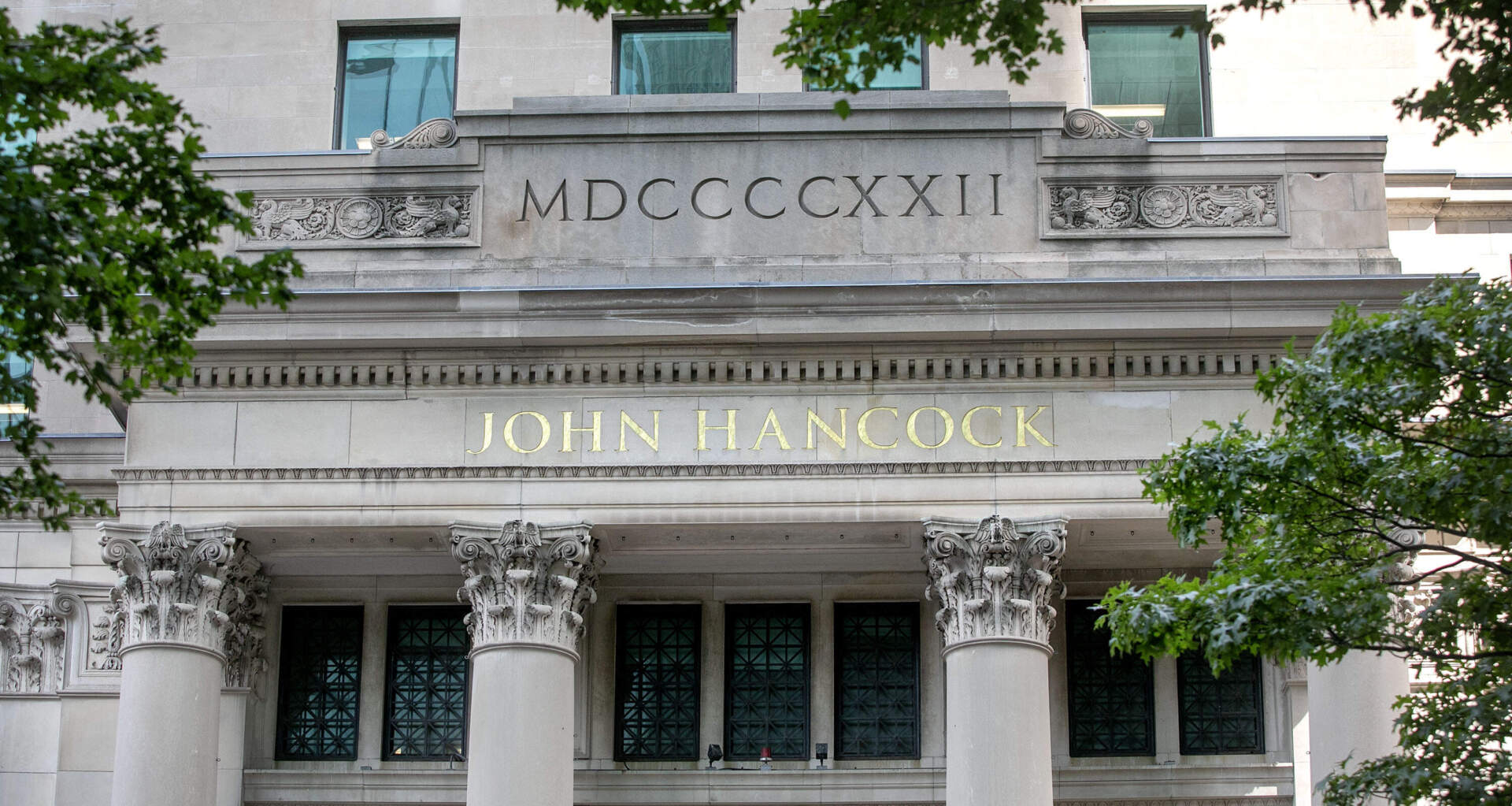For months in 2018, a John Hancock employee found herself crying in the locker room at her office’s gym.
She had been struggling to have a baby, and dealing with the emotional and physical challenges. But she found some relief in exercise.
“For me, that gym and that locker room was a very sacred space,” said the woman, who was an executive at the Boston-based company at the time. “With the endorphin flow and the release of having a workout, I would go into the locker room and emotionally process what I was going through in my life — and moved to tears several times.”
What she didn’t know, as she was sobbing alone in the locker room: someone may have been watching. A hidden camera was positioned inside a ceiling air vent, trained on the women below.
When news broke about the camera, she said she had assumed the financial services company’s higher ups would do everything they could to find who planted it. But six years and one lawsuit later, she said she feels that those at the top at John Hancock may have been more interested in protecting the company than finding the perpetrator.
“Hancock is literally the signature of trust and I can’t trust them at all,” the woman, known as Jane Doe 1 in the lawsuit she filed, said in a recent interview with WBUR. “After this, I don’t know how anyone can.”
In June 2019, in an all-staff email and meeting, John Hancock’s CEO told employees that a hidden camera had been found in the women’s locker room. A coaxial cable snaked from the camera to a fan room a floor above, where there was a video monitor.

The email from then-CEO Marianne Harrison called it “an invasion of privacy and completely unacceptable.”
“As soon as we were made aware of the situation we immediately involved investigative services and began an internal investigation,” the email went on. “We are working with law enforcement to ensure whoever is responsible will be held accountable for this action.”
WBUR spoke to six of the women who used the gym. (WBUR is not identifying any of the women because they fear professional repercussions for speaking out against John Hancock. They also worry about retaliation by the voyeur.)
Many of them said they felt comforted by Hancock’s response at the time.
“I felt violated, but I still felt like the right thing would be done and I’d be protected,” another woman, known in a lawsuit as Jane Doe 10, said she remembered thinking at the time.
But no public accountability came. In early 2020, Harrison told employees that the state police did not have sufficient evidence to arrest anyone.
That wasn’t enough for Jane Doe 1. She left the company and later filed a lawsuit in 2022, joined by one other woman.
“I believe that companies are made up of people and I believe that people make mistakes,” Jane Doe 1 said. “And so I wanted to figure out what mistakes were made at my expense… I did not think that I would uncover the mountain of malfeasance and negligence that we have before us now.”
What she found out, through the routine sharing of documents for the lawsuit, shocked her.

A building engineer had discovered the hidden camera in April 2019 — almost two months before Hancock disclosed it to employees. A supervisor told him in an email to, “Get the camera, cable cord etc out of there and KEEP IT QUIET!!!”
And when the camera was found, Hancock executives didn’t call the police right away. They did their own investigation, with no obvious results.
“It was at that juncture that they decided to protect the company rather than protect their people,” Jane Doe 1 said in an interview with WBUR.
Hancock executives brought in state police in June, 49 days after the camera was discovered.
“It seems that they didn’t consider it a real crime,” Jane Doe 9 said. “All they cared about was covering themselves.”
The supervising state police detective who investigated, Steven Lopes, said during a deposition that he was troubled Hancock had dismantled the camera — storing it in a Whole Foods bag — before calling the police.
“I wish I was called right away,” he said during his deposition in August. “But I dealt with the cards we had.”
State police detectives could not figure out where the camera came from. But records dug up by the women’s attorneys show it may have belonged to John Hancock. Invoices from the supply company Grainger, which are included in court records, show the same type of camera that was found in the women’s locker room was purchased by someone at John Hancock, with company money.

Hancock denied in court records that they owned the camera that was discovered and said they never looked into the Grainger purchases.
State police detectives said in depositions that having those invoices could have changed the course of their investigation.
For cases like this, companies don’t have to immediately call the police, said security consultant Christopher Falkenberg, president of Insite Risk Management. Executives generally aren’t eager to bring in outside investigators — who won’t necessarily have the corporation’s best interest in mind.
“Nobody would be eager to call the police in this instance,” said Falkenberg, who has not worked with John Hancock.
A security director might think, “‘This is hugely embarrassing. It’s really bad. It’d be better if this thing just went away,’” he said. “And one way it’s definitely not going to go away is if you call the police.”
But, Falkenberg said, internal corporate investigators don’t typically have the skills or expertise that the police have. In the Hancock case, he said the decision to try to handle this case in-house was the wrong one.
“It reflects a deficiency in judgment on the part of the first people who became aware of it, as to the severity and gravity,” he said.
“It seems that they didn’t consider it a real crime. All they cared about was covering themselves.”
Jane Doe 9
A John Hancock spokesperson declined an interview request from WBUR, saying that the company does not comment on pending litigation.
“However, we want to emphasize that we take the privacy and security of our employees very seriously and are confident in our position in this case,” the spokesperson wrote in a statement.
At a recent hearing in Suffolk Superior Court, Dana McSherry, an attorney for Hancock, said the company did nothing wrong.
“John Hancock undertook a privileged internal investigation and then turned the matter over to the Mass. State Police,” she said. “John Hancock provided information to the Mass. State Police throughout their investigation, and ultimately, the Mass. State Police concluded that they could not determine who placed the camera.”
Eight more women say they want to join the lawsuit, which is still in the discovery phase. John Hancock is fighting their inclusion, in part because the company says the women waited too long and it would further delay the case to include them.
An attorney for the women, Ilyas Rona, told WBUR that they are owed a seat at the table.
“The victims deserve a full accounting for how this happened,” he said. “With round-the-clock security officers, a dedicated head of security and a team of in-house investigators, how did all of these failures take place?”

The women say they’re afraid. Whoever installed that camera is still out there — and might have video of them. John Hancock told the women there’s no evidence the footage was recorded. But the women don’t know whether someone still has compromising images of them. They are asking for financial damages, including funds so they can do a thorough digital search to ensure their images aren’t posted online.
“For me, a big part of joining the case is wanting answers because the extent of the privacy violation is still unknown,” Jane Doe 9 said. “I honestly don’t even know if John Hancock knows, but I feel like they don’t care to find out.”
The women say they are still dealing with the repercussions of being watched. They’re constantly on alert when they walk into what’s supposed to be a private space. One woman said she can’t bring herself to change her kids’ clothes in the locker room before swim class.
“I get so emotional because I think about these very real impacts,” Jane Doe 2 said. “It’s not being able to be in a locker room, and not constantly looking for a camera in every public setting.”
It’s also been hard to stand up to their former employer. But if they don’t, they say, who will get to the bottom of what happened?
“I feel like they think that they can get away with it because they’re a big name,” Jane Doe 9 said. “Somebody needs to stand up to them.”
Among the thousands of pages of documents Hancock handed over to the women’s lawyers is a presentation by the head of communications in September 2019 — three months after the company told the employees about the camera and alerted the police to investigate.
The session focused on crisis communications. Its case study: the hidden camera incident.
She shared with the audience the email sent to employees.

The slide noted how the response met John Hancock’s corporate values: “Do the right thing. Own it. Share your humanity. Get it done together.”
The presentation noted what’s considered a win in the public relations world: the story, at least publicly, was over in 24 hours.

اترك تعليقاً